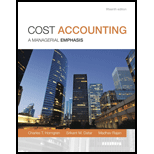
1.
Variance analysis is the process of ascertaining the deviations between actual and planned output.
Favorable Variance:
A circumstance that happens when a foreseen cost is higher than its real cost, or when expected income is lower than real income
Unfavorable variance:
Unfavorable variance is the difference between the actual and planned output which is harmful for the company like actual cost incurred is more than the standard or planned cost or the revenue is less than the planned revenue.
Direct Material Price Variance:
Direct material price variance in the difference between the budgeted per unit cost of raw material and the actual per unit cost multiplied by the number of units purchased.
Direct Material Efficiency Variance:
Direct material efficiency variance is the difference between the budgeted quantities and the actual quantities purchased at a specific price.
Material Price Variance:
Material price variance is the difference between the budgeted and the actual purchase price of the material purchased. It is calculated to ascertain the efficiency of the purchase department.
Direct Labor Efficiency Variance:
Direct labor efficiency variance is the difference between the actual time consumed in manufacturing unit and the standard time allowed or the budgeted time for the manufacture of a unit multiplied by the standard direct labor rate.
To calculate: The variable
2.
To calculate: The fixed overhead spending and production volume variance and indicate whether each is favorable (F) or unfavorable (U).
3.
To comment: On overhead variances and to identify the firm is to be worried about its control over technology spending or not.
Want to see the full answer?
Check out a sample textbook solution
Chapter 8 Solutions
Cost Accounting (15th Edition)
- One company might depreciate a new computer over three years while another company might depreciate the same model computer over five years...and both companies are right. True Falsearrow_forwardno chatgpAccumulated Depreciation will appear as a deduction within the section of the balance sheet labeled as Property, Plant and Equipment. True Falsearrow_forwardNo ai Depreciation Expense is shown on the income statement in order to achieve accounting's matching principle. True Falsearrow_forward
- no aiOne company might depreciate a new computer over three years while another company might depreciate the same model computer over five years...and both companies are right. True Falsearrow_forwardno ai An asset's useful life is the same as its physical life? True Falsearrow_forwardno ai Depreciation Expense reflects an allocation of an asset's original cost rather than an allocation based on the economic value that is being consumed. True Falsearrow_forward
- The purpose of depreciation is to have the balance sheet report the current value of an asset. True Falsearrow_forwardDepreciation Expense shown on a company's income statement must be the same amount as the depreciation expense on the company's income tax return. True Falsearrow_forwardDont use AI Give soln.arrow_forward

 AccountingAccountingISBN:9781337272094Author:WARREN, Carl S., Reeve, James M., Duchac, Jonathan E.Publisher:Cengage Learning,
AccountingAccountingISBN:9781337272094Author:WARREN, Carl S., Reeve, James M., Duchac, Jonathan E.Publisher:Cengage Learning, Accounting Information SystemsAccountingISBN:9781337619202Author:Hall, James A.Publisher:Cengage Learning,
Accounting Information SystemsAccountingISBN:9781337619202Author:Hall, James A.Publisher:Cengage Learning, Horngren's Cost Accounting: A Managerial Emphasis...AccountingISBN:9780134475585Author:Srikant M. Datar, Madhav V. RajanPublisher:PEARSON
Horngren's Cost Accounting: A Managerial Emphasis...AccountingISBN:9780134475585Author:Srikant M. Datar, Madhav V. RajanPublisher:PEARSON Intermediate AccountingAccountingISBN:9781259722660Author:J. David Spiceland, Mark W. Nelson, Wayne M ThomasPublisher:McGraw-Hill Education
Intermediate AccountingAccountingISBN:9781259722660Author:J. David Spiceland, Mark W. Nelson, Wayne M ThomasPublisher:McGraw-Hill Education Financial and Managerial AccountingAccountingISBN:9781259726705Author:John J Wild, Ken W. Shaw, Barbara Chiappetta Fundamental Accounting PrinciplesPublisher:McGraw-Hill Education
Financial and Managerial AccountingAccountingISBN:9781259726705Author:John J Wild, Ken W. Shaw, Barbara Chiappetta Fundamental Accounting PrinciplesPublisher:McGraw-Hill Education





